Buried tunnels
Buried tunnels

Of the hundreds of tunnel that bored their way underground during the Victorian era, a sizeable collection failed to survive into the digital age, smothered by landfill for reclamation purposes or to overcome safety fears.
These tunnels might be gone but they needn’t be forgotten – many are substantial engineering feats, worthy of note. Below are rare pictures of portals which can no longer be admired for real. There is some unique architecture amongst them and all were products of considerable endeavour.
Annesley Tunnel
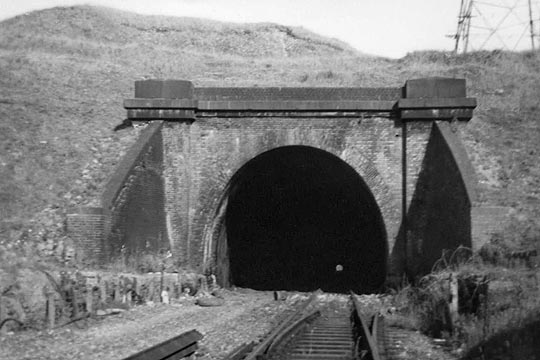
Annesley Tunnel opened on 24th October 1892. One yard over one thousand in length, it was built by contractors Logan & Hemmingway for the Manchester Sheffield & Lincolnshire Railway and, following the company’s name-change to the Great Central, became part of its main line connecting Sheffield with the capital, comprising the 92-mile London Extension. Running parallel with it at a higher level was the Midland’s shorter Kirkby Tunnel.
Despite being a conduit for millions of tons of freight, the tunnel was closed surprisingly in May 1968. It was soon backfilled with colliery waste and rubble from the St Anne’s slum clearance scheme in Nottingham. According to the works’ foreman, it was still “in good condition”.
Watnall & Mickleover tunnels
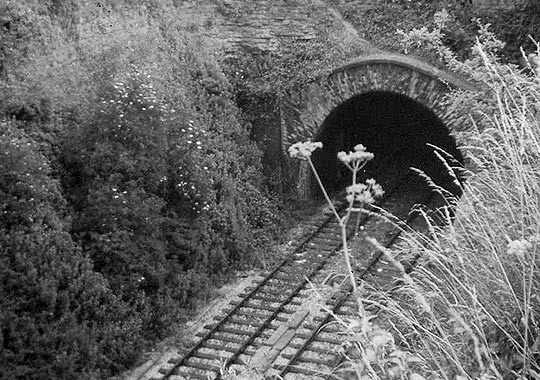
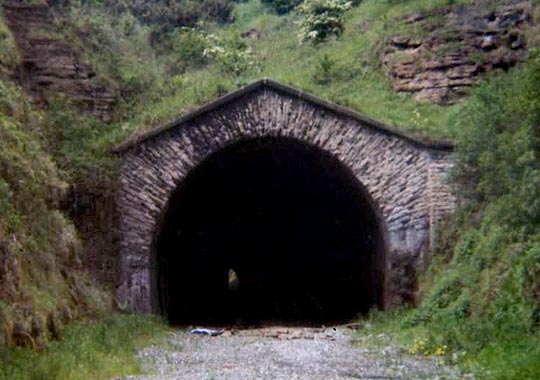
Authorised by Parliament in 1872, the Great Northern’s Derbyshire & Staffordshire Extension established a connection between Grantham, Nottingham and Burton upon Trent by extending the Ambergate Nottingham Boston & Eastern Junction Railway which the GN had secured, through lease, in 1861. It was driven by the desire of local businessmen to shatter the Midland Railway’s monopoly on local coal traffic.
Known locally as the Derby Friargate Line, the alignment passed to the east and north of Nottingham before cutting through Derby where an impressive warehouse and sidings where established to handle goods. In 1881, the GN extended the route through to Wales by acquiring the Stafford & Uttoxeter Railway.
The route demanded considerable engineering including a lengthy viaduct at Bennerley and four tunnels. Their portals were variable in design, given them a unusual character. Opened in 1875, Watnall – or Kimberley – tunnel (above) was the shortest at 268 yards and ran parallel with another of the same name, driven by the Midland Railway four years later. Its portals featured stonework that radiated out from the centre, with the parapet at the east end rising to a point whilst the other was curved. The tunnel itself incorporated a curve to the south.
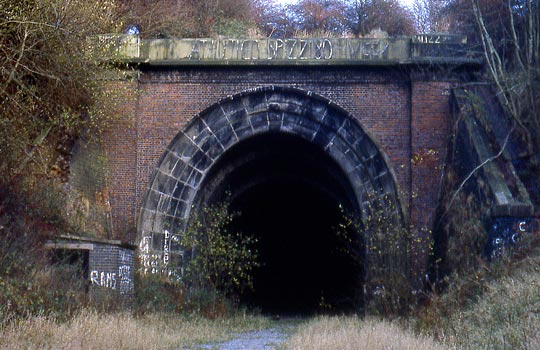
(taken from Geograph and used under Creative Commons licence)
Mickleover Tunnel (above) formed part of a later section of line, seeing its first commercial traffic in 1878. The imposing west portal created an illusion of size; the main bore – 464 yards in length – was rather smaller than the entrance suggested due to the lining beyond it being stepped inwards.
The two tunnels officially closed in 1968, but the section of line through Mickleover Tunnel served as a test track for BR’s Research Division until a final train ran on 26th November 1971.
Savile Road Tunnel
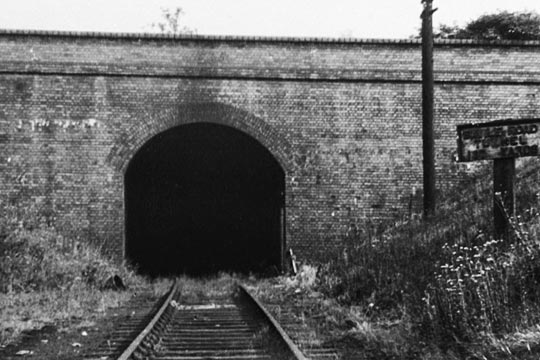
Accommodating a single track for 187 yards, Savile Road Tunnel enabled the Midland Railway to serves its goods station on the south side of Dewsbury. The route was originally intended as a congestion-busting main line between Sheffield and Bradford but this ambitious plan was abandoned after the Lancashire & Yorkshire Railway granted running powers over its own lines.
Opening on 1st March 1906, the route survived for just 44 years, closing on 18th December 1950. Although its southern end had long since disappeared, the tunnel’s north portal remained visible until it was obliterated by a housing development in 2010.
Sutton-in-Ashfield Tunnel
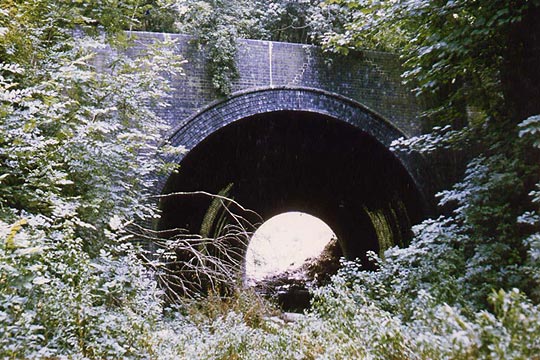
Between 1913-16, the Mansfield Railway pushed a line westwards from the Great Central’s Lancashire Derbyshire & East Coast route at Clipstone to the GC’s main line at Kirkby Bentinck. Its aim was to compete for East Midlands coal traffic.
To overcome the embankment carrying the Midland’s branch to Sutton-in-Ashfield, the company was obliged to create a tunnel through it of around 50 yards in length. The line survived only until 1966 whilst the tunnel now lies under the southbound carriageway of the A38 Sutton-in-Ashfield bypass.
Norwood End Tunnel
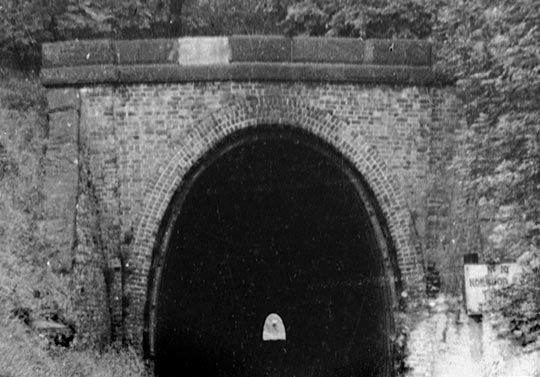
In 1868, the Midland Railway opened a short branch from its main line at Killamarsh to serve West Kiveton Colliery. A connection was made to Norwood Colliery a year later and the line was extended to reach Kiveton Park Colliery in 1878.
This last section of railway demanded the driving of a 300-yard tunnel to penetrate a ridge at Norwood. Over the years that followed, the structure suffered distortion due to ground movement and had to be strengthened by the insertion of iron ribs.
Closure came in May 1961. In November 1967, the M1 motorway opened on an alignment that took it directly over the tunnel which resulted in the loss of its westernmost portion. The east portal has also been buried under landfill.
Shaw Cross Tunnel
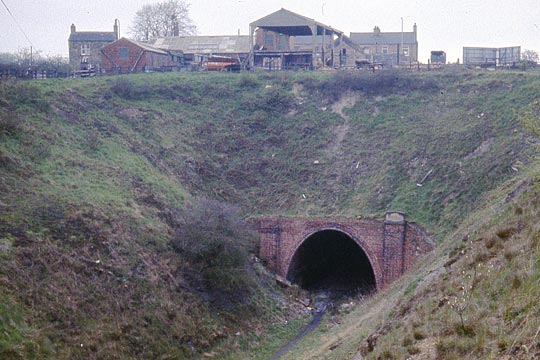
The Bradford Wakefield & Leeds Railway – soon retitled the West Yorkshire Railway – opened its Wrenthorpe Junction to Batley line in stages, completing it is 1864. A year later it was absorbed into the Great Northern which, in 1874, opened a diversion via Dewsbury and added a second track. The original alignment featured a tunnel under Leeds Road at Shaw Cross, hosting the line for 209 yards.
Although much of this section closed in 1956, the tunnel continued to be visited by coal trains serving the nearby colliery. May 1972 brought official closure. Today the south portal is under a road whilst a wood now occupies the northern approach cutting.
Rowthorne Tunnel
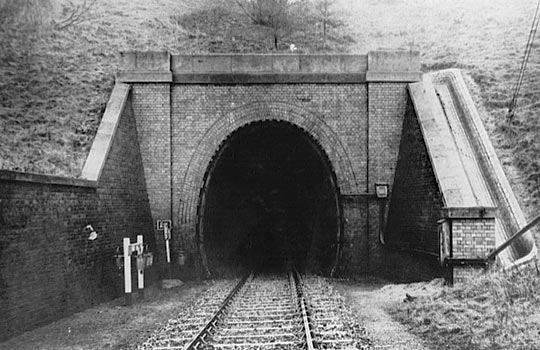
With the intention of benefiting local mineral movements, the Midland’s Doe Lea Extension Branch followed a predominantly NW-SE alignment to connect the railhead at Glapwell with the line between Tibshelf South and Pleasley junctions. Although the distance involved was short – just two and a half miles – the single-track route demanded a tunnel of 929 yards, climbing to the south at 1:50. This proved challenging for coal trains. Two ventilation shafts were provided.
Despite the considerable effort expended in construction, the tunnel’s operational life lasted just 40 years, closing on 28th July 1930. Having suffered from ground movement, it was backfilled and the approach cuttings landscaped during the 1970s. Their alignment is now followed by a public footpath, the Rowthorne Trail.







